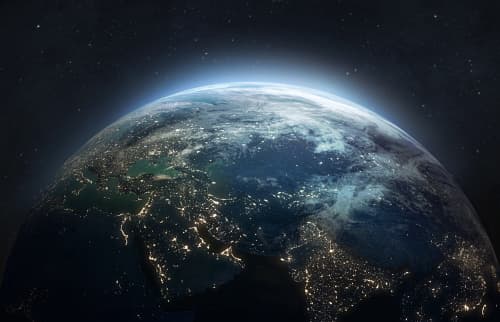Here on Earth, we may think that we are one of a kind. Since we do not yet have proof of extraterrestrial life, many believe we are truly alone in the universe and the center of it. However, science is working hard to discover other planets that contain life and might be a habitable zone for humans. While we continuously look to planets in our solar system, such as Mars and Venus, for this possibility, several planets beyond our solar system may be fit to sustain complex life. One recently discovered planet, in particular, is looking promising: Kepler 442-b.
If you’ve never heard of Kepler 442-b, you may be excited to learn how potentially similar it is to Earth. The question is how possible it is for Kepler 442-b to sustain human life. In this article, we explain everything we currently know about 442-b, whether it is habitable for humans, and what it might mean for the future of our galaxy.
Contents
What Is Kepler 442-b?
Kepler 442-b is a giant rocky planet about twice Earth’s size. It is about 1,100 lightyears away. NASA classifies it as an exoplanet, a planet that orbits a star outside the solar system, a K-type orange dwarf main sequence star. Kepler 442-b’s mass is 2.36 Earths, it takes 112.3 days to complete one orbit of its star, and it is 0.409 AU from its star.
Kepler 442-b was discovered and announced in 2015 by the Kepler Space Telescope transiting its parent star. It’s about half the distance from its star that the Earth is from its sun.

Is Kepler 442-b as Livable as Earth?
As mentioned, Kepler 442-b is a rocky planet about twice the size of Earth. What makes this planet most Earth-like is its size and surface temperature. Research has determined which known exoplanets are more likely to harbor life. The recently discovered Kepler 442-b has been determined to be at least potentially livable, based on a scale developed to measure the livability of planets.
Kepler 442-b orbits a moderately large star and contributes to its potential ability to sustain a large complex biosphere due to the amount of radiation it may receive. It may receive enough sunlight to support photosynthesis, living organisms, humans, and other complex life.
However, this conclusion is oversimplified, as several other data points need to be considered in determining whether 442-b or any other planet is suitable for life. These factors include atmospheric content, the presence of water, and surface pressure. This begs the question, will humans ever be able to reach 442-b?
Will Humans Ever Set Foot on 442-b?
Despite how promising this planet may seem, you shouldn’t envision a future on 442-b just yet. With the planet being over 1,100 light years away, it’s doubtful that humans will be able to set foot on the planet without the development of extremely advanced technology, which we are unlikely to see anytime soon.
This aside, scientists still have to do more research to determine whether Kepler 442-b has a rocky composition on its solid surface and a thick enough atmosphere to sustain human life. For humans to successfully live on a planet, at a minimum, the planet needs to have more water than Earth, a near-circular orbit, and a thicker atmosphere than our current atmosphere.
Even though they have determined that the planet has high habitability, it is still uncertain whether it can be habitable, especially by humans. Several factors need to be determined before positively stating that Kepler 442-b truly is habitable for humans, including climate stability, to understand the long-term suitability of the planet for life.
This, combined with the long distance between Earth and Kepler 442-b, makes it difficult to gather much information about the planet’s conditions; the estimates drawn from the limited data may be promising, but more is needed to make any determinative findings.

Kepler 442-b v. Kepler 422-b: What’s the Confusion?
If you research Kepler 442-b, you may come across some sources that mention Kepler 422-b. While these planets are easily confused with each other, they are entirely different.
The main difference between the two Keplers is that, while Kepler 442-b is somewhat promising as a “new Earth,” Kepler 422-b is not. Kepler 422-b is a giant planet composed mainly of gas. It lacks the rockiness that Kepler 442-b contains, which is vital for a planet to sustain complex life. It is almost 2,400 light years away and much further away than Kepler 442-b, making it much more challenging.
While various sites might confuse the two planets, rest assured that NASA is focusing on the right planet.
Conclusion: Is a New Earth Possible?
To conclude, Kepler 442-b may be promising as a potential Earth 2.0, but the truth is that there is not enough data to make that determination. What’s more, it is too far away from the planet for us to gather enough of the right information to conclude the full habitability of the planet.
In fact, if we were to find other potentially habitable planets, it would likely be less than 100 light years away, making it impossible to get to without technology that has yet to be created. Many other nearby clones of Earth have been discovered, but for now, it seems like our best bet is to take better care of our planet. Luckily, we have plenty of time left in our own solar system.

